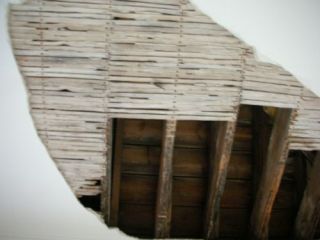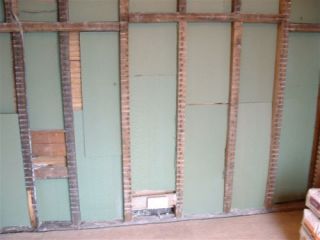Fixing to lath & Plaster is often difficult as the wall does not have much strength at all where the laths and plaster are!
Lath and plaster is a very old technique for building partition walls and has now been replaced by a stud partition wall and plasterboard.

This is a picture of a lath & plaster ceiling. You can see that the thin lengths of timber (laths) are nailed across the joists and then plaster is applied to the laths. This method of construction has not been used for some time now, but is often found in older houses.

This is what a lath and plaster wall will look like with the plaster and the laths removed. This has been removed as the plaster had become detached from the laths and was bulging. When this happens the only real remedy is to remove the plaster and the laths and board out the studs with plasterboard.
The other side of this lath and plaster wall has been previously renovated or else you would see the laths and the plaster on the inside.
The only way to fasten an heavy object such as shelving or a sink to a lath and plaster wall is to screw directly into the studs (the studs are the upright lengths of wood), or you could remove a section of the lath and plaster and fix noggins in between the studs and then plasterboard the area and fasten to the noggins.
Forget trying to find the studs using a stud detector, many of them are useless. To find the studs you can use a strong magnet, simply scan the wall with the magnet and it will pick up the nail heads that fix the laths to the studs, you then know where the studs are to fix to-



